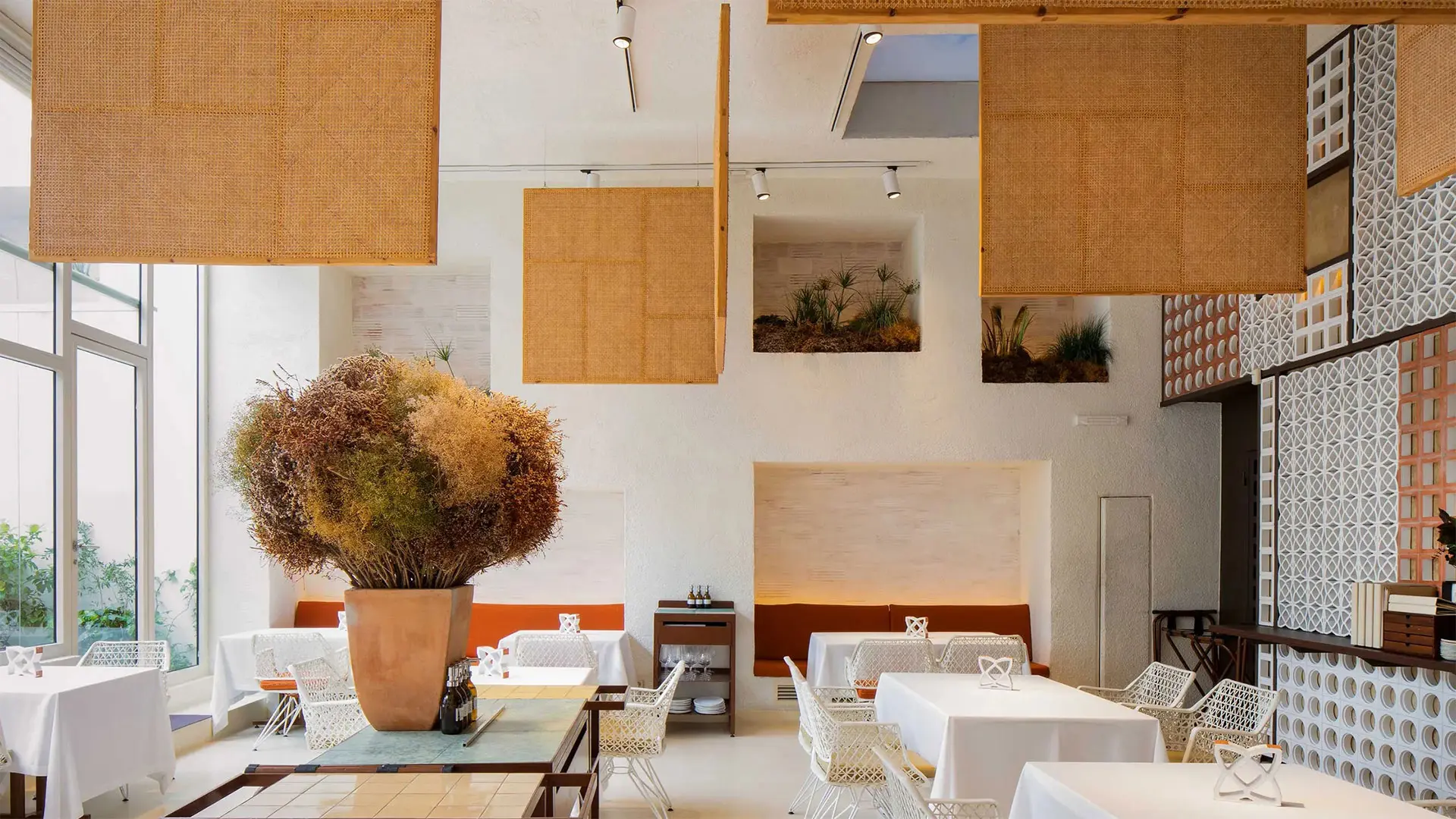Your first ever trip to experience Semana Santa or Easter in Spain, and especially in Andalucia, is an event you’re unlikely to ever forget.
If you happen to be visiting a city like Seville during Holy Week, you’d be forgiven for thinking you’d right travelled back to its 16th Century origins. Especially moving are some of the more sombre displays of devotion to the Passion of Christ; Penitents parade, often barefoot in honour of the last few days of Christ, wearing the distinctive pointy hoods to protect their anonymity as a self-confessed sinner, or carrying the weight of up to a metric tonne on their shoulders as they move the float slowly through the streets.
To help better understand the events and characters you will see during Semana Santa in Spain, here are the basics that every visitor should know:
Hermandades and Cofriadas
These are the Church Brotherhoods that you will see making the Semana Santa processions each year, which marks the culmination of months of preparation and devotion. The Church’s congregation worship their own statues as they make their way through the streets from the Church to the Cathedral, mounted upon the float. The statues are highly revered and valuable to the Church, depicting the scenes of the life of Christ or the Virgin – or often they may have both.
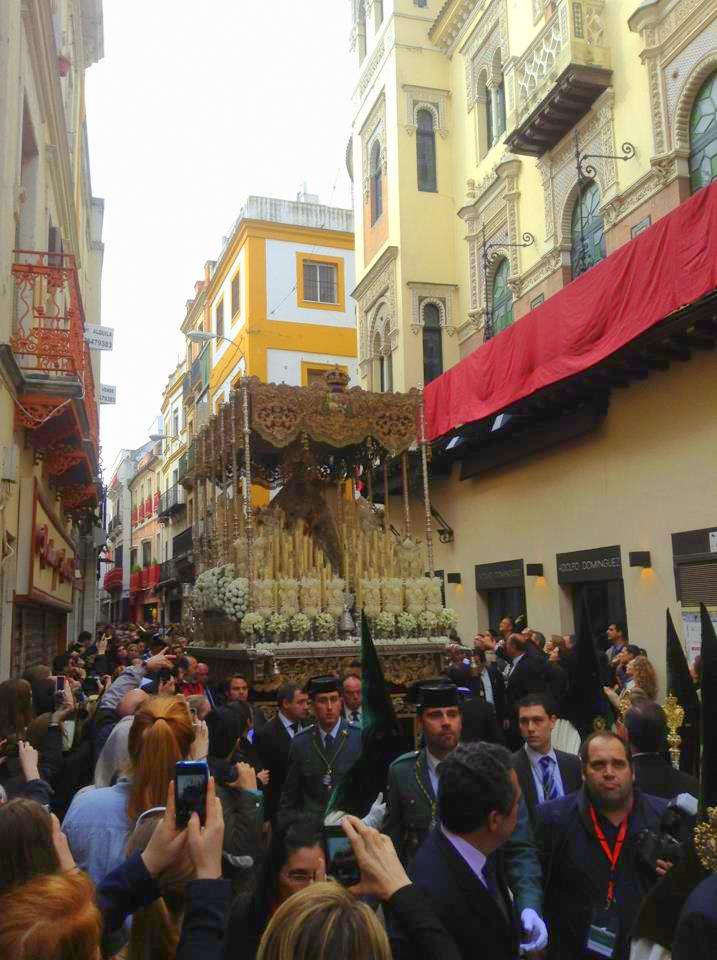
Penitentes or Nazareños
These are the penitents who form part of each procession, either walking in front of the float carrying candles, or helping to carry the float through the streets. The word “Nazareños” is from the Nazareño or the robe worn by the Penitents, and its not unusual to see them walking barefoot, with shackles, or bearing heavy wooden crosses
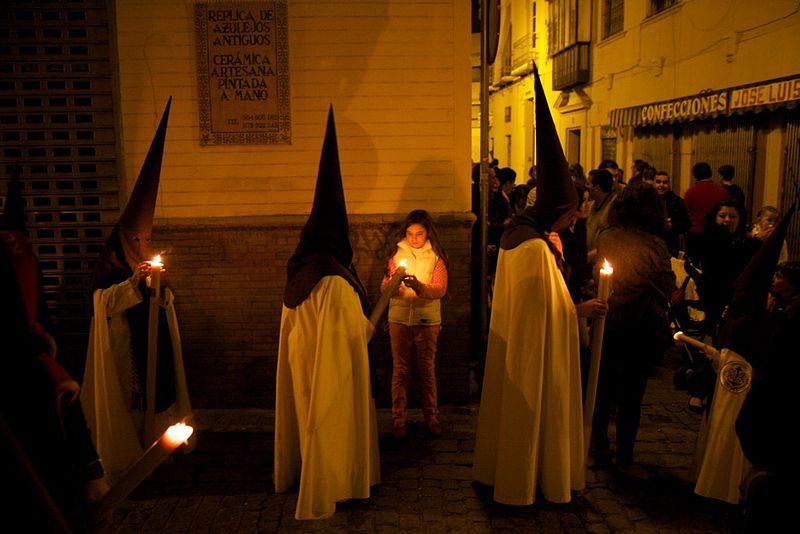
Capirotes
These are the pointed hoods you see the Penitents wearing. They were originally designed to protect the anonymity of the sinners so they would not be recognised by the townsfolk. The colour and style will vary according to which Hermandad they belong to.
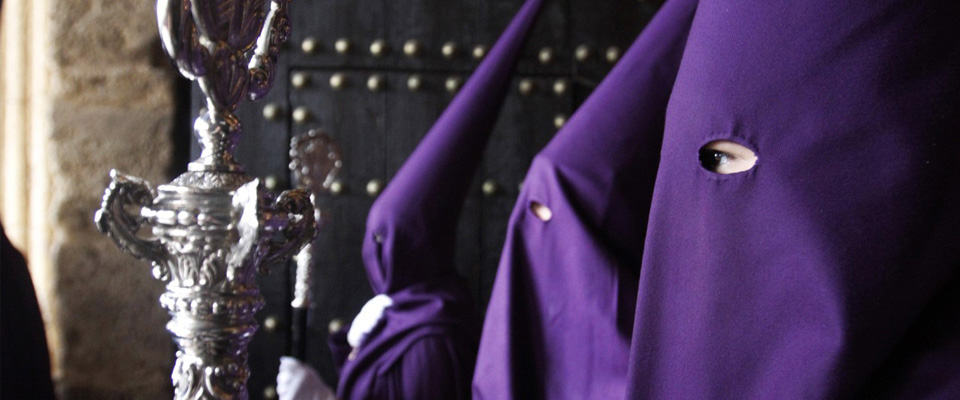
Pasos
The Pasos are the enormous floats, literally “mobile altars” in some cases, that are carried on the shoulders of the Penitents. Many Brotherhoods have two; one depicting Christ and the other, the Virgin. In Seville alone there are some 60 Pasos, or processions taking place between Palm Sunday and Easter Sunday so there is an intricate logistical plan that must always be followed to ensure all of the floats can be taken to the Cathedral at the allocated time, and not get into a traffic jam in some of the narrower corners of the historic quarter!
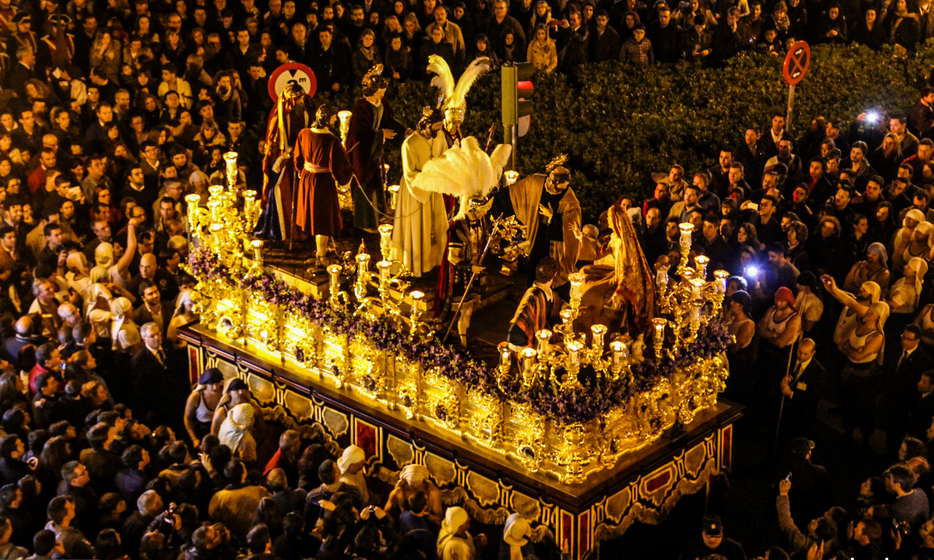
Surprisingly, the figures atop the floats are often made from nothing more than wood, wax and wire, with some being up to 450 years old. Some of these are true works of art and are fiercely protected, such as the statue of Christ on the Paso of Christo de Burgos, that Toma Tours visits in Seville each year. It is said to be a masterpiece created by Bautista Vazquez el Viejo in the 16th century.
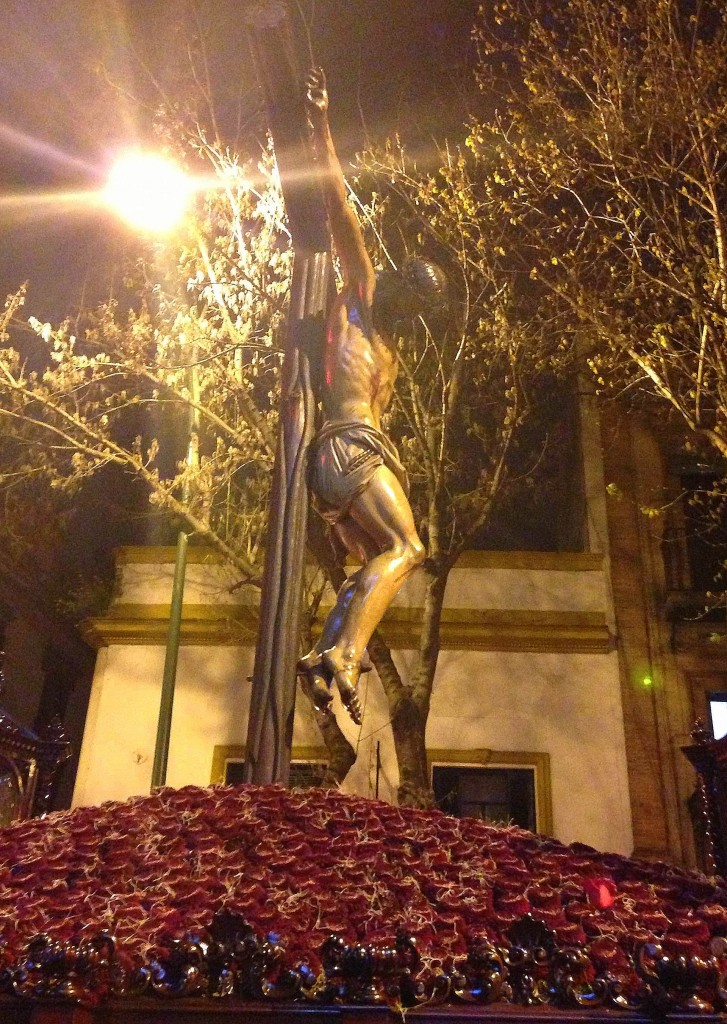
This helps you understand why the floats will never leave Church if there is a mere hint of a drop of rain – a rainy Easter week is a true disaster that leaves many a heartbroken devotee mourning the cancellation of their Paso as though it were the passing of a family friend.
Mantilla
The Mantilla is the beautiful lace head gown worn during Easter week, exactly as it first was during the 16th, 17th and 18th centuries, creating a sense of stepping back in time for visitors during Semana Santa. Several famous paintings by Velásquez, Goya, and their peers show ladies wearing their Mantilla, and today it is considered the most normal thing in the world to finish off your Easter outfit with a Peineta (comb) and delicate lace Mantilla. If you would like to buy one as a souvenir you can find the best hand-woven lace mantillas costing hundreds of Euros in city-centre boutiques.
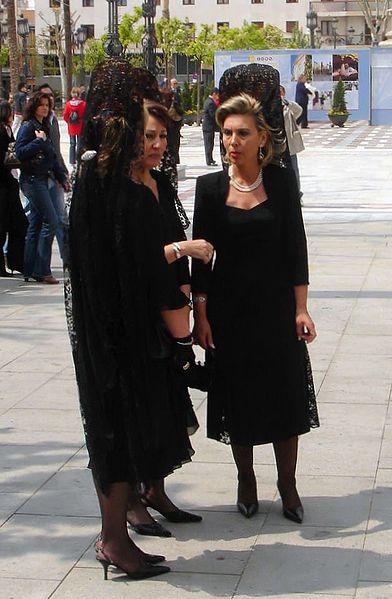
Saeta
There is nothing more moving than hearing the sound of a “Saeta” being sung out from a balcony high above the procession below. The Saeta is is a form of Flamenco traditionally sung at Easter as a heartfelt cry of devotion to the image of Christ or the Virgin, sung by a “Saetero” often from a vantage point in the crowd, or a balcony above.
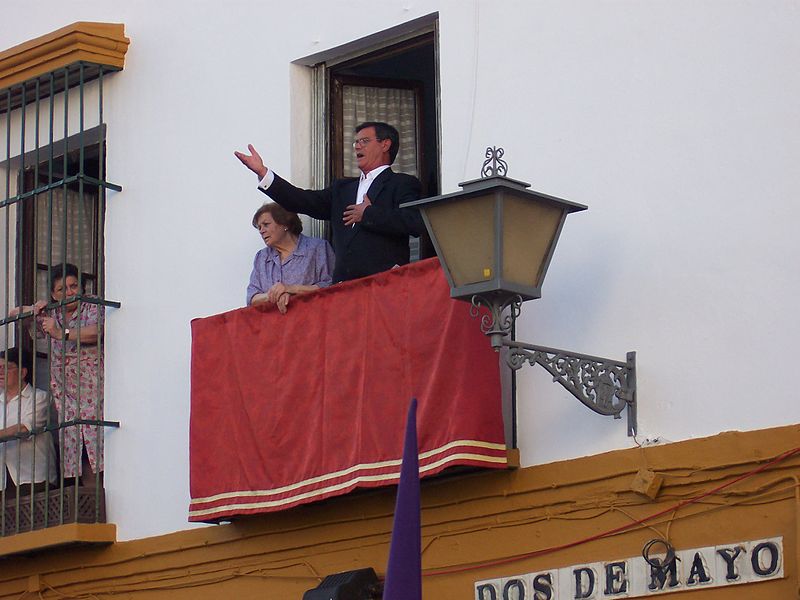
Listening to a Saetero singing out across the crowd during the Pasos is one of the most moving parts of our annual balcony trip to Seville, learn how you can experience Semana Santa in Seville first hand here. and feel free to add your own insights into the comments below.










